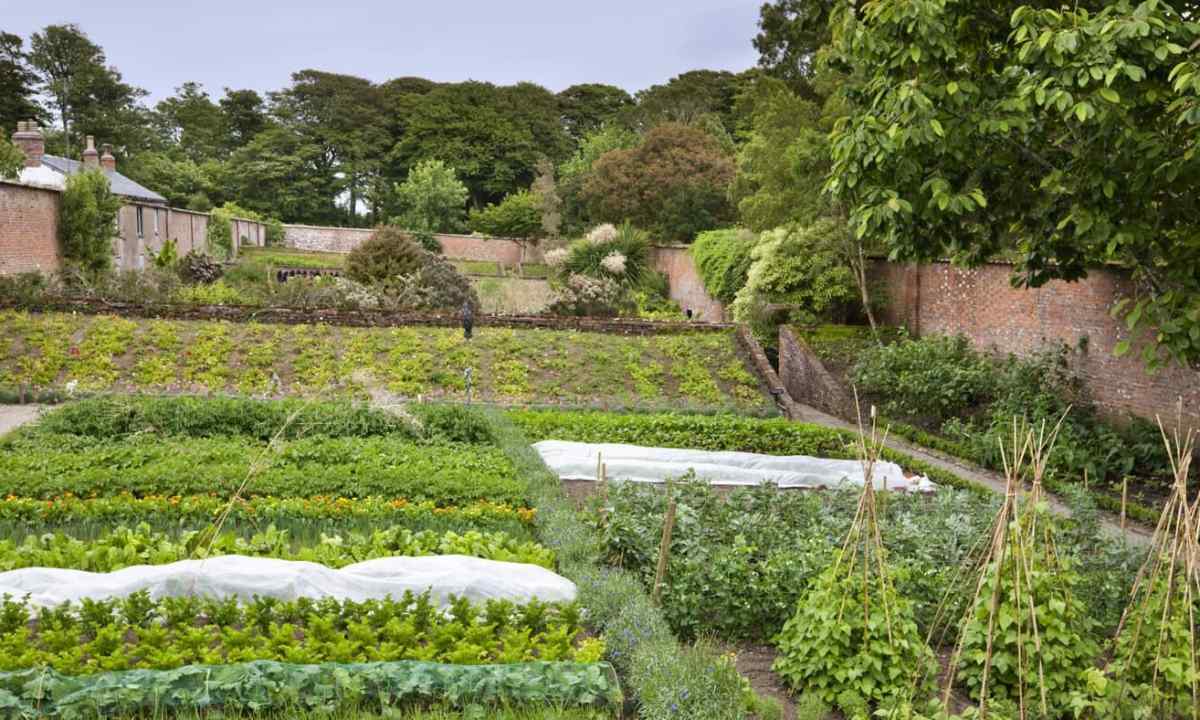To break kitchen garden means to make allotment suitable for cultivation of vegetables, fruit and greens. Own kitchen garden - perhaps, the most ancient source of livelihood for people. The kitchen garden can be broken anywhere, but it will only yield fruits where the soil is fertile, and the climate is suitable for growth of plants.
It is required to you
- site, plan, tools
Instruction
1. For a start it is necessary to choose allotment which will become your kitchen garden subsequently. It should not be too big or too small: on tiny kitchen garden not to grow up everything that will want, and the big kitchen garden will take away the lot of time and forces. The size of kitchen garden is defined by that how many and what you are going on it to grow up. Borders of the site need to be noted, having hammered pegs where corners of future kitchen garden are assumed. So easier will be to make the plan. Between pegs pull tape or cord.
2. It is the best of all to begin with scheduling of kitchen garden. On the drawing it should be noted whether in kitchen garden there will be house and if yes, that where. Also it is necessary to think where there will pass paths and where it will be most convenient to locate the well or barrel with water. Trees and bushes - apple-trees, cherries, bird cherry - usually land at the edges of kitchen garden. Closer to the center beds with vegetables are located. Traditionally quite most part of kitchen garden is taken away for landings of potato. In the center, it is in a visible place quite good to arrange flower bed or ""the Alpine hill"".
3. If the kitchen garden breaks on the site for the first time, such site is called virgin. The soil on it is considered good and yields rich harvest, but for this purpose it should be prepared properly. First of all the earth needs to be dug up carefully. Best of all to do it in the early spring when the earth has thawed only. The top soil is called the turf. These are the rotted-through dead leaves, the weaved grass roots and so on. At digging-up of the site it is necessary to try that the turf has appeared at depth of 10-15 cm, and to surface there was fertile chernozem.
4. After digging-up the earth needs to be loosened well. The soil will be softer, the easier on it useful plants will ascend. Loosen the soil with harrow and rake.
5. After that time to plan borders of future beds has come. It is necessary to observe balance, having thought over their size and arrangement. Beds are moved from the drawing to the area, their corners are noted by pegs. After that beds should be created. As a rule, it is accepted that beds acted on 10-15 cm over kitchen garden surface.
6. When beds are ready, it is possible to think also over what on them to put. There are some cultures which grow up in kitchen gardens: - potatoes - carrots - onions - cucumbers - tomatoes - fennel - parsley - peas - beet - salad - squash - pumpkin - apples - pears - strawberry - raspberry - the smorodinavsa can put it in kitchen garden.
7. It is necessary to remember that there are plants long-term, two-year-old and one-year. Long-term, such as apple-tree and currant, it is possible to put once and they will fructify many years in a row. Treats two-year plants, for example, potato - it yields fruits for the second year after landing of seeds therefore she cannot be imprisoned seeds, to the earth dig in already tubers. Annual plants are carrots, parsley fennel, radish. They are planted, collect fruits, and the next year landed again.

